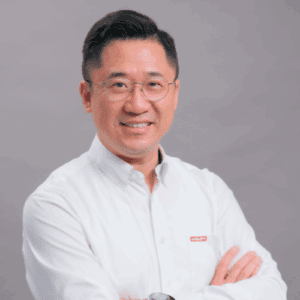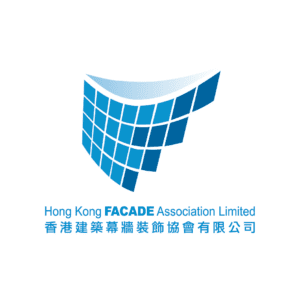Technological Innovations To Achieve a Net Zero Building Environment
12 Sep (Fri) Day 2 : 10:40 – 11:20
Buildings are the foundation of our communities, but their emissions are also driving the climate crisis. The building sector contributes nearly 40% of all global greenhouse gas emissions. To continue to thrive, society needs net zero buildings. A net zero building is simply a building that has no net carbon emissions during its construction and operation. Emissions are reduced and what’s leftover is balanced by renewable energy or carbon offsets. Innovative façade design is the key to achieve a net zero building such as incorporating BIPV panels in the façade design and consider adopting modular construction methods in lieu of traditional ones.
Now is the time to implement net zero carbon for buildings, both new and existing. Achieving net zero carbon will require us to transform how we design, build, and operate buildings of all types and scales.
Learnings
- Understanding Net-Zero Transition
- Science-Based Target for Buildings
- How to Deliver the Practice by Technological Developments
- Our Green Vision to Global Mission
Post-event Actions
- Follow Up with Contacts: Actively connect with fellow attendees and speakers via platforms like LinkedIn or email to solidify networking opportunities. This helps maintain relationships and opens doors for future collaborations.
- Share Knowledge: Summarize key insights, take notes, and share them with colleagues or peers through presentations, reports, or team meetings. This reinforces learning and benefits the broader organization.
- Provide Feedback: Offer constructive feedback to organizers through surveys or direct communication. This helps improve future events and shows engagement. Use tools like Google Forms for structured responses.
- Engage on Social Media: Post about the conference experience on platforms like Twitter or LinkedIn, using event hashtags to maintain visibility and continue discussions. Share quotes, photos, or key takeaways to stay connected with the event community.
Speakers

Moderator
Michael Leung
General Manager
Hilti


Michael Leung
Hilti
General Manager
Michael LEUNG
General Manager, Hilti (Hong Kong) Limited
Experienced Managing Director with a demonstrated history of working in the construction industry in Australia, Hong Kong, Macau and mainland China. Skilled in Sales, Engineering, Construction Technology, Customer Relationship Management (CRM), and Account Management. Strong business development professional graduated from Ivey Business School at Western University, Imperial College London and HKUST. Before joining Hilti, Michael is a chartered structural engineer who involved in commercial, educational and infrastructure projects.
My Sustainability Goals for 2025:
- Embodied carbon saving to be regulated in new building design
- More examples in solid waste reduction in construction by considering Circularity
- First structural timber building to be built in HK

Patrick Wong
Managing Director
South Star Glass Limited


Patrick Wong
South Star Glass Limited
Managing Director
Patrick Wong – Founder and Managing Director, South Star Glass Limited and Guangdong South Star Glass Limited
Patrick has set up South Star Glass Limited on 2000 and Guangdong South Glass Limited (manufacture basis) on 2013. So, Patrick has more than 20 years’ experiencein glass business.
Glaspedia is a brand under South Star Glass Limited, that provides high-quality glass products in Hong Kong, mainland China, and overseas.
They’re known for their advanced glass processing technologies, like vacuum glass production, building integrated photovoltaics (BIPV), digital ceramic printing, SentryGlas® interlayer lamination, and even 2D/3D curved glass for architectural designs.
Their products are used in everything from energy-saving Low-E glass to bulletproof and self-cleaning glass, and they focus a lot on innovation and sustainability for modern buildings.
Mr. Patrick Wong 畢業於理工學院 (理工大學前身) 建築系,期間擔任1984 – 1985 President of Hong Kong Polytechnic Students’ Union and 1985 – 1986 Chairman of Representative Council, Hong Kong Federation of Students. Patrick 畢業後從事不同的項目管理工作,當中有參與香港太空館內裝翻新項目,在建築方面,曾策劃和興建國內大型建築項目和做過業主代表、亦有管理國內鋁門窗廠和傢俬廠等經驗。
Patrick在二千年創立香港南星玻璃有限公司並在2013年在國內成立廣東南星有限公司作為玻璃加工廠,為香港同海外地區提供優質玻璃給項目發展。南星一向走高端玻璃路線,近年更積極推動環保和可持續發展,並成為香港綠色建築議會和澳洲綠色建築議會嘅會員。其下真空玻璃、光伏發電玻璃和其他綠色玻璃等屢獲殊榮,真空玻璃外牆改造更獲得香港綠色建築議會2013環保建築獎項及連續兩年入選HKGBC Retrofitting Guidebook的內容。2024年更在澳洲Sydney build 贏得最佳展位大獎,為華人爭光!此外Patrick亦都是香港幕牆協會嘅理事,期望為業界出一分力,為香港和祖國建設未來。
Patrick Wong is a graduate of the Hong Kong Polytechnic University in Building Technology and Managment. During his studies, he demonstrated strong leadership as President of the Hong Kong Polytechnic Students’ Union (1984–1985) and Chairman of the Representative Council, Hong Kong Federation of Students (1985–1986).
After graduation, Patrick built a diverse project management portfolio, including the interior renovation of the Hong Kong Space Museum and leading large-scale construction projects in Mainland China as both planner and owner’s representative. He also gained valuable experience managing aluminum window and furniture manufacturing operations.
In 2000, Patrick founded South Star Glass Hong Kong Ltd., and in 2013, he expanded with GuangDong South Star Glass Ltd., establishing a reputation for delivering premium, innovative and sustainable glass solutions for projects in Hong Kong and overseas. Under his leadership, the company has earned numerous accolades, including the 2013 Green Building Award and repeated recognition in the HKGBC Retrofitting Guidebook. In 2024, South Star Glass received the “Best Stand” award at Sydney Build.
Patrick currently serves as a board member of the Hong Kong Facades Association and remains committed to advancing the glass and construction industry in Hong Kong and China.
Supported by


Hong Kong Façade Association Limited
The Hong Kong Façade Association (HKFA) strive to connect, to align and to join hands together with different organizations and individuals in Hong Kong to incorporate the concept of sustainability into building design so as to achieve the goal of carbon neutrality to reduce the environmental impacts to nature and improving our quality of life.
Our organisation’s sustainability goals for 2025
Climate change is a mega challenge for the world, leading to various disasters such as heatwaves, floods and hurricanes. These climate-induced natural disasters have caused significant environmental, economic, social, and health consequences. It is now a consensus of the society that climate change must be stopped.
Carbon neutrality is expected to address climate change challenges, and its achievement requires the collective efforts of various industries and sectors. The building and construction sector is a big energy consumer and greenhouse gas emitter as they are responsible for 37% of the global energy-related emissions, demonstrating significant opportunities to achieve of carbon neutrality. Consequently, there is an urgent need to achieve net zero carbon performance in the built environment.
Green retrofit is the sustainable refurbishment of an existing building to make it more efficient, better for the environment and sustainable for the future. When it comes to building envelope retrofitting, improving the energy efficiency of existing buildings is the key to reduce the carbon footprint. It usually involves installing better insulation, energy-efficient glazing, and more efficient lighting.
To further reduce carbon footprint, we can consider adding alternative energy sources for our power supply. Solar power is one of the renewable energy sources that heats and cools the indoor space and provides electricity. Installation of BIPV or solar panels on the roof of a building or incorporate them into the wall cladding of building facades is becoming increasingly affordable, and it is a great way to reduce the carbon footprint.